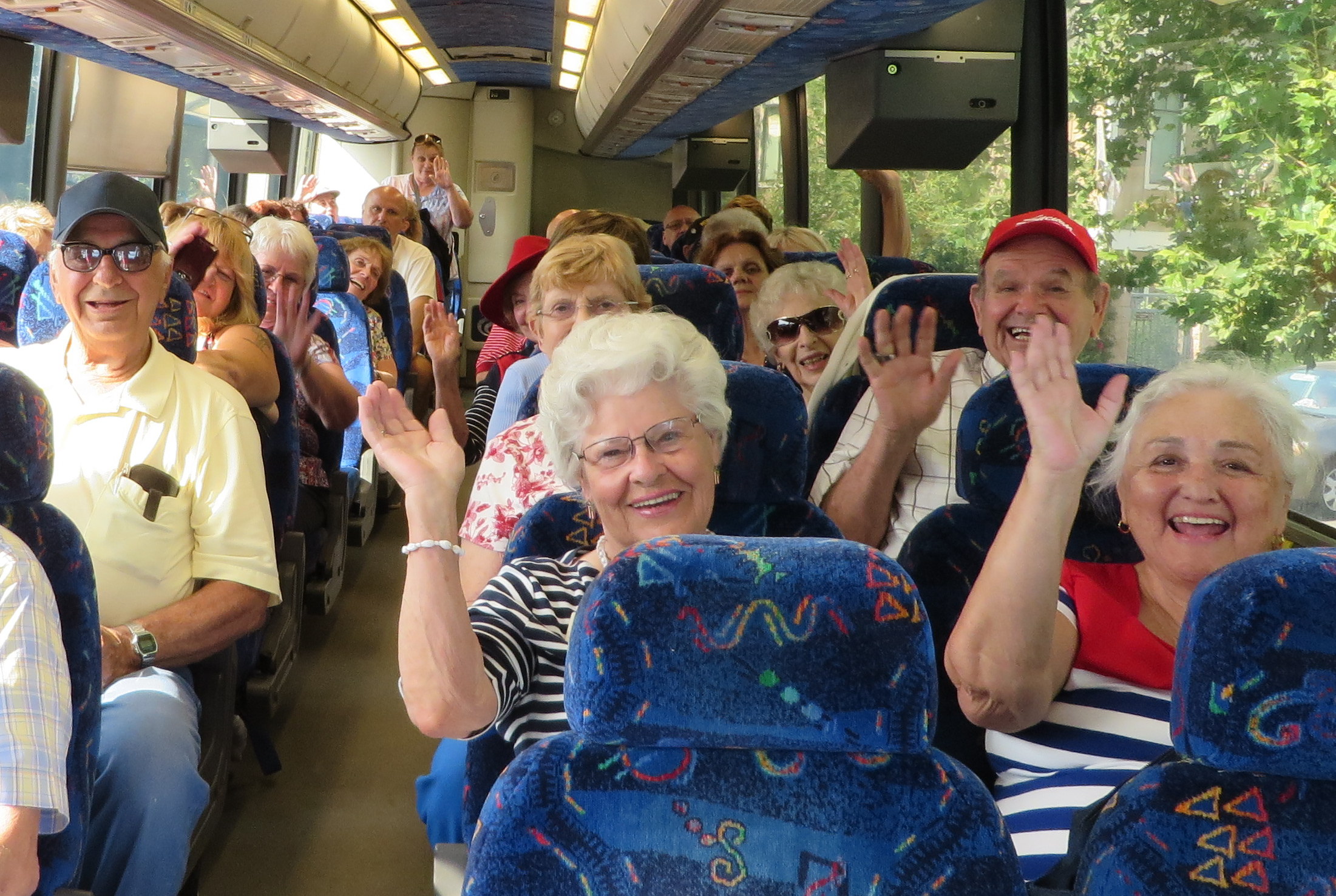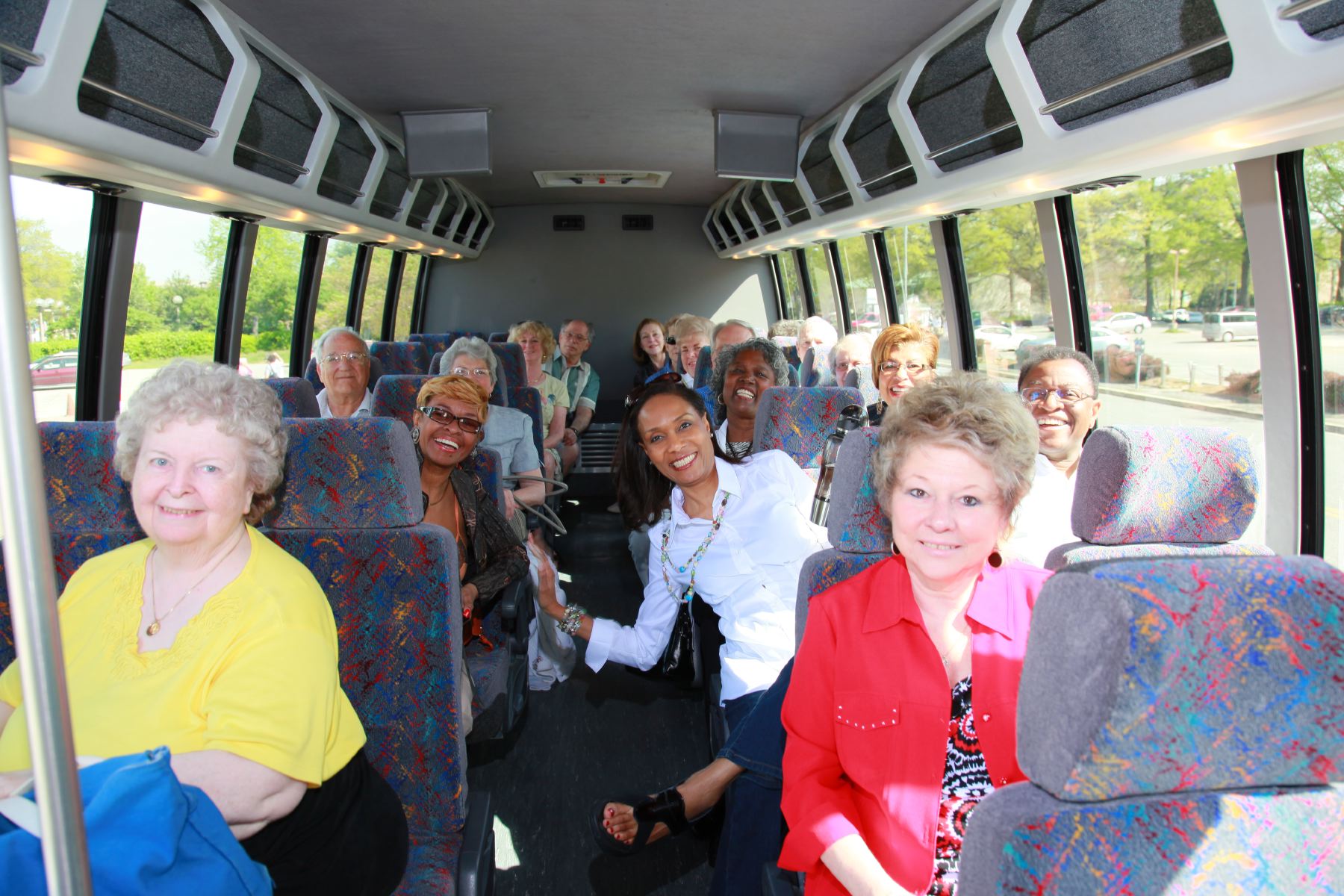Bus tours for seniors citizens – Bus tours for senior citizens are experiencing a surge in popularity, driven by a desire for accessible and affordable travel experiences. This burgeoning market presents unique opportunities and challenges for tour operators, demanding a keen understanding of the senior demographic’s travel preferences, needs, and concerns. Factors such as accessibility, comfort, and engaging itineraries are paramount in attracting this valuable segment of travelers.
This report delves into the key aspects of the senior citizen bus tour market, examining demographic trends, preferred amenities, effective marketing strategies, pricing models, and crucial safety considerations. By understanding these elements, tour operators can better cater to the specific needs and desires of this growing market segment, ensuring a safe, enjoyable, and memorable travel experience for senior citizens.
Understanding the Senior Travel Market
The senior travel market is a significant and growing segment of the tourism industry, representing a substantial opportunity for bus tour operators. Understanding the demographics, psychographics, and travel preferences of this population is crucial for developing successful and appealing tour packages. This analysis will delve into the key factors influencing senior citizens’ choices and highlight the nuances within this diverse demographic.
Key Demographics and Psychographics of Senior Travelers
The senior travel market encompasses a broad range of individuals, typically aged 65 and older. However, significant variations exist within this group. Demographically, this segment is increasingly diverse in terms of ethnicity, income levels, and education. Psychographically, many seniors value comfort, convenience, and security. They often prioritize relaxation and socializing over adventurous, physically demanding activities.
A significant portion also displays a strong interest in learning and cultural experiences, seeking enriching and educational opportunities during their travels. This segment is also characterized by a willingness to spend on experiences that enhance their quality of life.
Top Factors Influencing Senior Citizens’ Choice of Bus Tours
Three primary factors consistently emerge as key influences on senior citizens’ selection of bus tours: price and value, itinerary and destination, and convenience and comfort. Price sensitivity is often high, but seniors are willing to pay more for perceived value—meaning well-organized trips with high-quality accommodations and enriching experiences. The itinerary and destination must align with their interests and physical capabilities.
Finally, convenience, such as easily accessible boarding and comfortable seating, and a stress-free travel experience are paramount.
Travel Preferences Across Different Senior Age Groups
While generalizations should be avoided, observable trends exist across different age groups within the senior demographic. Individuals aged 65-75 often display a greater willingness to participate in moderately active tours with longer travel durations. They may be more interested in exploring multiple destinations and engaging in a wider range of activities. Conversely, those aged 75 and above often prefer shorter trips with fewer destinations, focusing on relaxation and comfort.
Examine how 4 day caribbean cruise can boost performance in your area.
They may prioritize accessibility and easily navigable itineraries, potentially opting for tours with fewer physical demands.
Preferred Tour Characteristics by Age Group
| Age Group | Preferred Tour Length | Preferred Destination Type | Average Budget |
|---|---|---|---|
| 65-75 | 7-14 days | Varied; historical sites, national parks, coastal regions | $2,500 – $5,000 |
| 75+ | 3-7 days | Relaxing destinations; smaller towns, scenic areas, resorts | $1,500 – $3,000 |
Marketing and Promotion Strategies: Bus Tours For Seniors Citizens

Reaching the senior travel market requires a targeted approach that leverages channels and messaging resonant with this demographic’s preferences and needs. Successful marketing hinges on building trust, showcasing value, and employing strategies that effectively communicate the benefits of bus tours specifically designed for seniors.Effective marketing channels must consider the unique communication preferences of senior citizens. While digital marketing plays a role, traditional methods remain crucial.
Targeting Senior Citizens Through Diverse Channels
Senior centers and retirement communities offer direct access to the target audience. Presentations, informational booths at community events, and partnerships with community organizations can generate significant interest. Online advertising, while important, should focus on platforms and websites frequented by seniors, emphasizing clear, easy-to-navigate interfaces and avoiding overly complex or visually cluttered ads. Print advertising in publications catering to seniors, such as local newspapers or magazines focusing on retirement living, also remains a valuable strategy.
Direct mail marketing, using visually appealing brochures and postcards, can be effective when targeting specific geographic areas with high senior populations.
Compelling Marketing Materials for Senior Travelers
Brochures should feature large, high-quality images showcasing scenic destinations and comfortable bus interiors. Text should be clear, concise, and easy to read, using a large font size. Detailed itineraries highlighting specific attractions, meal options, and accessibility features are crucial. Website content should mirror the brochure’s clarity and focus on addressing senior-specific concerns such as accessibility, pace of travel, and health and safety protocols.
Testimonials from past senior travelers are powerful tools for building trust and credibility. Consider incorporating a section specifically addressing frequently asked questions (FAQs) regarding health concerns, trip insurance, and luggage allowances.
Building Trust and Credibility with Senior Travelers
Trust is paramount when marketing to seniors. Transparency is key – clearly outlining all costs, inclusions, and exclusions. Displaying affiliations with reputable organizations, such as AARP or senior travel associations, can significantly boost credibility. Offering secure online booking options and providing clear contact information for questions and concerns helps build confidence. Featuring positive reviews and testimonials from past senior travelers on your website and marketing materials strengthens your reputation.
Highlighting the experience and expertise of your tour guides and drivers further enhances the perception of safety and reliability.
Key Marketing Messages Resonating with Senior Citizens
The following five key marketing messages resonate strongly with senior citizens considering bus tours:
- Stress-Free Travel: Highlight the convenience and ease of organized bus tours, minimizing the stress associated with independent travel planning and logistics.
- Companionship and Socialization: Emphasize the opportunity to meet new people and enjoy shared experiences with like-minded individuals.
- Affordable Luxury: Showcase the value proposition of all-inclusive packages, offering a luxurious experience at a reasonable price.
- Safety and Security: Reassure seniors about safety measures, including experienced drivers, comfortable vehicles, and well-planned itineraries.
- Accessible and Comfortable Travel: Promote accessibility features, comfortable seating, and planned rest stops to cater to the needs of senior travelers.
Safety and Security Considerations

Senior citizens embarking on bus tours present unique safety and security challenges due to factors such as age-related physical limitations, potential health vulnerabilities, and decreased mobility. Tour operators must prioritize proactive measures to mitigate risks and ensure a safe and enjoyable experience for all participants.Prioritizing the safety and well-being of senior travelers requires a multi-faceted approach. This includes careful planning, risk assessment, and the implementation of robust emergency protocols.
Failing to address these concerns could lead to serious incidents and negative impacts on the reputation of the tour company.
Potential Safety Concerns for Senior Citizens on Bus Tours
Several factors increase the vulnerability of senior citizens during bus tours. These include the risk of falls both on and off the bus, potential exacerbation of pre-existing health conditions due to travel fatigue or changes in environment, and the increased likelihood of experiencing medication-related incidents or cognitive impairment affecting judgment. Furthermore, seniors may be more susceptible to scams or theft due to their potential reliance on assistance or diminished awareness of their surroundings.
The potential for heatstroke or hypothermia should also be considered, especially during extreme weather conditions.
Strategies for Ensuring the Safety and Well-being of Senior Travelers
Implementing comprehensive safety measures is crucial. This begins with pre-trip health questionnaires to identify any pre-existing conditions requiring special attention. Buses should be equipped with adequate safety features, including wheelchair accessibility, grab bars, and emergency exits clearly marked and easily accessible. Drivers should receive specialized training in handling senior passengers, including recognizing signs of distress and providing assistance with boarding and disembarking.
Regular breaks during long journeys allow for stretching, restroom use, and hydration, mitigating the risk of fatigue-related incidents. Furthermore, clear communication with participants regarding itinerary changes and emergency procedures is paramount.
Emergency Procedures and Protocols, Bus tours for seniors citizens
A detailed emergency plan is non-negotiable. This plan should include procedures for handling medical emergencies, such as heart attacks or strokes, and protocols for communicating with emergency services. Designated personnel, such as tour guides or drivers, should be trained in basic first aid and CPR. The tour itinerary should include the location of the nearest hospitals and emergency services.
A comprehensive contact list of participants, including emergency contacts, should be readily available. Regular safety checks of the bus and equipment are essential. A clearly defined chain of command for responding to emergencies will ensure efficient coordination and minimize confusion during critical situations.
Managing Potential Health Emergencies During a Bus Tour
A visual representation of best practices for managing potential health emergencies could be depicted as a flowchart. The first step would be the immediate recognition of the emergency by the driver or tour guide. This would be followed by assessment of the situation and the individual’s needs. The next step would involve contacting emergency medical services (EMS), providing accurate location details, and describing the situation.
Simultaneously, first aid would be administered by trained personnel, if available, until EMS arrives. Post-emergency procedures would include documenting the incident, contacting family members, and providing any necessary follow-up care. This flowchart would highlight the importance of clear communication, rapid response, and coordinated actions to minimize the impact of health emergencies.
The success of bus tours for senior citizens hinges on a holistic approach that prioritizes safety, comfort, and engaging experiences. By understanding the specific needs and preferences of this demographic and implementing effective marketing strategies, tour operators can tap into a lucrative market while providing valuable travel opportunities for senior citizens. Careful attention to detail, from accessible amenities to comprehensive safety protocols, is crucial in building trust and fostering a positive travel experience.

